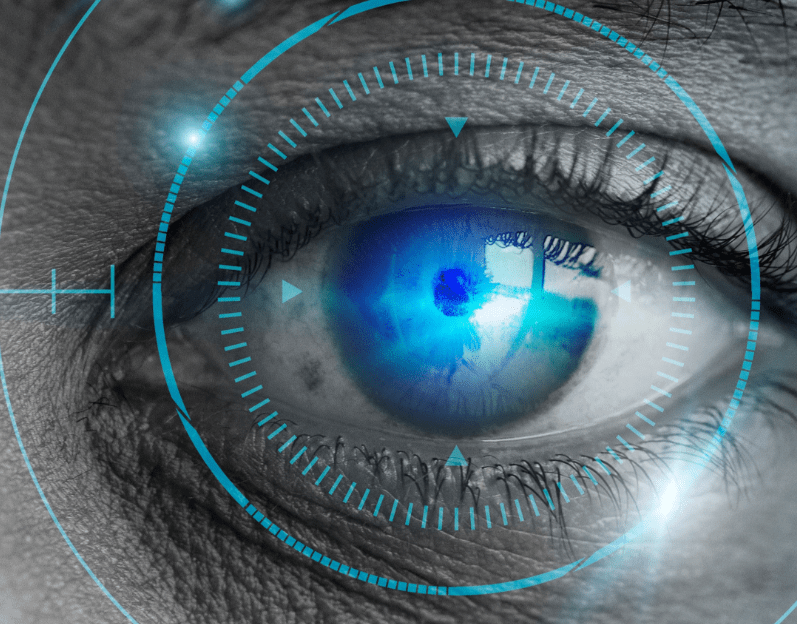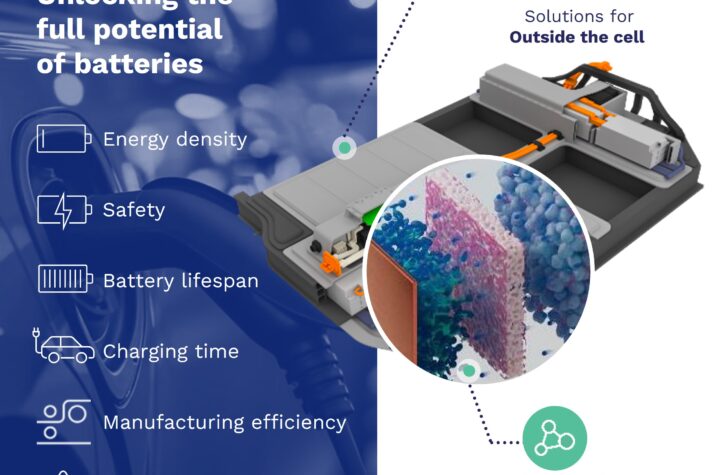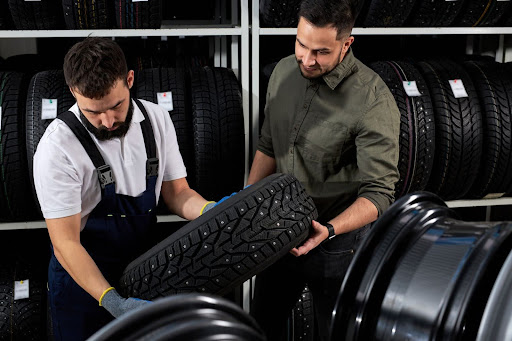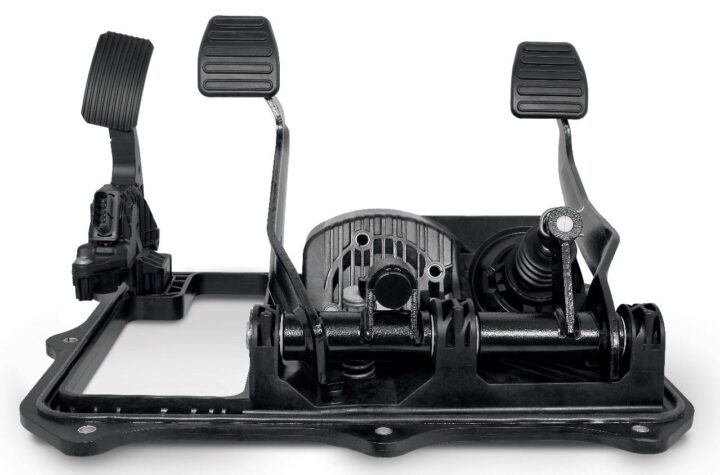
Silicon photonics innovator, SiLC Technologies, Inc. (SiLC), announced that AutoX Inc. (AutoX), the frontrunner RoboTaxi company in China, has selected SiLC’s Eyeonic Vision Sensor for its robotic taxi fleet. SiLC’s Eyeonic™ Vision Sensors take LiDAR to a new level of performance by providing accurate, depth, instantaneous velocity, and dual-polarization intensity making it an ideal LiDAR-based vision solution for AutoX’s growing fleet of RoboTaxis.
Having recently announced that its RoboTaxi fleet has grown to more than 1,000 autonomous vehicles, AutoX is on a mission to democratize autonomy. The company’s self-driving platform is capable of handling the most challenging and dynamic traffic scenarios in urban cities around the world. AutoX is using SiLC’s Eyeonic Vision sensor to deliver highly detailed and accurate instantaneous velocity and ultra-long-range information to augment other sensors in its proprietary hardware stack. Positioned for scale, earlier this year AutoX unveiled Asia’s first L4-dedicated automated production facility to equip its fleet.
“At AutoX we are laser focused on, and fully committed to, our mission of democratizing autonomy — to accelerate the advent of fully driverless cars,” noted Jianxiong Xiao (Professor X), founder & CEO of AutoX. “We’re excited to work with the world’s leading 4D LiDAR chip supplier. Together, we are building safer transportation and bettering lives for the world.”
Announced in December of 2021, SiLC’s Eyeonic Vision Sensor is a first-of-its-kind FMCW LiDAR transceiver. At the nexus of the Eyeonic Vision Sensor is SiLC’s silicon photonic chip which integrates LiDAR functionality into a single, tiny chip. Representing decades of silicon photonics innovation, this chip is the only readily-integratable solution for manufacturers building the next generation of autonomous vehicles, security solutions, and industrial robots.
“In addition to being the only fully chip integrated solution on the market, SiLC also has demonstrated the longest-range FMCW LiDAR operation,” said Dr. Mehdi Asghari, SiLC’s CEO and founder. “This and the combination of precision velocity enables a vastly simplified and lower latency perception stack. We’re pleased to partner with AutoX, a company dedicated to improving the safety and performance of autonomous vehicles.
AutoX and SiLC Partnership Announcement Editorial Background Automotive Industries Q&A
1. What is the relationship between SiLC and AutoX?
AutoX has selected SiLC’s Eyeonic™ Vision Sensor for its Autonomous RoboTaxi Fleet. SiLC’s Eyeonic Vision Sensors take LiDAR to a new level of performance by providing accurate depth, instantaneous velocity, and dual-polarization intensity making it an ideal LiDAR-based vision solution for AutoX’s growing fleet of RoboTaxis.
2. How will SiLC’s Eyeonic Vision Sensor improve AutoX RoboTaxis?
SiLC’s mission is to help machines to see like humans so we can reconnect with our lives.
By adding instantaneous velocity to every voxel measurement, the autonomous vehicle perception stack is able to quickly detect, classify and predict the path of dynamic objects around the vehicle. This is a key feature that enables higher performance of autonomous vehicles in crowded city environments.
This is very similar to how human perception works. Our eye is an extension of our brain, preprocessing vast amounts of information. As a result, we have many more motion-sensitive cells in our retina, making us immediately aware if something moves in our field of vision. Only then do we use our high-resolution cells to identify the objects of interest. Likewise, SiLC has designed instantaneous motion detection into its technology – this is how our Eyeonic Vision Sensor reacts faster than traditional approaches bringing far more efficient object recognition, tracking and prediction.
3. What is the rollout for SiLC’s technology in the AutoX fleet?
AutoX is planning to equip a number of cars with SiLC’s Eyeonic Vision sensor this year.
4. How big is the AutoX fleet and are there growth projections?
This February the size of the AutoX RoboTaxi fleet has grown to more than 1,000 autonomous vehicles globally. AutoX is on a mission to democratize autonomy and will increase this number by manyfold in the coming years.
5. Is there a dollar valuation you can provide for this deal?
Considering the growth aspirations of AutoX and SiLC, the potential business value of this deal could be substantial.
6. What is SiLC’s Eyeonic Vision Sensor?
The Eyeonic Vision Sensor is a first-of-its-kind chip-integrated FMCW LiDAR transceiver solution. Commercial availability of Eyeonic was announced Dec. 7, 2021.
The Eyeonic Vision Sensor takes LiDAR to a new level of performance by providing accurate, instantaneous velocity, depth, and dual-polarization intensity information while enabling immunity to interference. These features will enable robotic vehicles and machines to have the necessary data to perceive and classify their environment and help them predict future dynamics using low-latency, low-compute power algorithms.
At the nexus of the Eyeonic Vision Sensor is SiLC’s thumb-sized silicon photonics chip which, for the first time, integrates coherent LiDAR functionality into a single, tiny chip. It integrates a sophisticated laser, high quantum efficiency detectors, powerful amplifier, and meters of waveguides.
Representing decades of silicon photonics innovation, this chip is the only readily-integratable solution for manufacturers building the next generation of autonomous vehicles, security solutions and industrial robots.
The Eyeonic Vision Sensor is a scalable, lightweight, low-cost solution that can measure the full motion of any object – without any prior training. Harvesting the additional information that is carried by photons, Eyeonic is the foundation for the next generation of machine vision.
7. Explain SiLC’s leadership role in creating FMCW solutions?
Building an FMCW LiDAR out of discrete components and fiber is extremely difficult, costly, and bulky and is not suited for mass deployment.
SiLC’s solution is 100 times smaller and 10-100 times lower cost. The SiLC team is comprised of silicon photonics pioneers that have been working in this field for over 25 years. They have commercialized more silicon photonics products than any other team in this space.
Their deep, rich heritage in analog and silicon photonics has enabled them to develop a significant body of intellectual property, as well as a proprietary process for manufacturing high-performance optical components at large scale.
Representing a true breakthrough, SiLC is the first company to reduce the essential components required for a coherent FMCW system into a single chip. This chip is mass-producible at scale with common semiconductor equipment. SiLC does this through a proprietary silicon-based semiconductor fabrication process to manufacture its chips and standard, automated IC style assembly processes, enabling robust, cost-effective, and compact solutions.
8. Why are velocity and motion so important here?
Velocity and motion are key attributes in visual cognition for identifying opportunities or threats. The human eye, as an extension of the brain, analyzes motion in our field of view and can quickly redirect our attention if there is movement.
SiLC provides per pixel direct instantaneous velocity/motion information, enabling rapid detection and tracking of objects of interest.
9. The Mobility Market (Autonomous Vehicles) has embraced LiDAR. There is a plethora of LiDAR offerings being deployed into this market. Can you give an overview of this market and explain how SiLC’s offerings compare to the others?
Autonomous Vehicles need to be able to detect a low reflectivity object, like a downed motorcyclist on the road, up to 500m out to perform an adequate evasive maneuver. A high-resolution long-range LiDAR is essential for this market to develop. LiDAR sensors for robotic vehicles and Level 3/4/5 advanced driver assistance systems (ADAS) are expected to grow to a multi-billion-dollar market.
First generation 3D sensors still rely on a pulsed technology called ToF (time of flight), measuring the round-trip time of light pulses. Rather than depending on the time of flight, stereo vision, triangulation, or structured light, FMCW (frequency modulated continuous wave) sensing takes advantage of the properties of photons themselves.
FMCW has tremendous promise, as it introduces coherence into the equation – providing distance, motion, velocity, and information about the surface and materials of any point in the 3D space.
Extensive use of this approach has been prevented in the past due to the cost and number of components needed. Taking this technology from theory to proven concept is a huge milestone on the roadmap from technology vision to market reality – and will usher in advancements. This is where SiLC steps in with their decades of experience in taking the promise of silicon phonics to practical deployment.
We are the only company to prove out full FMCW chip integration under the microscope. Our steadfast commitment to commercializing will enable applications ranging from mobility and robotics to security, AR/VR and biometric scanning.
10. The key take-aways from the SiLC/AutoX announcement
● AutoX has selected SiLC’s Eyeonic Vision Sensor for its Autonomous RoboTaxi Fleet.
● AutoX has the largest fleet of robo taxis in operation in China (>1,000 vehicles globally).
● SiLC’s mission is to help machines to see like humans so we can reconnect with our lives and what matters.
● SiLC announced the Eyeonic Vision Sensor in December, which is the world’s first chip integrated FMCW LiDAR transceiver.
● Instantaneous velocity measurement in addition to x/y/z is critical to enable reliable autonomous driving.
● AutoX is planning to equip a number of cars with SiLC’s Eyeonic Vision sensor this year.
To learn more, please visit www.silc.com.
About AutoX
AutoX is the leading provider of RoboTaxi in China, with the mission of ‘Democratizing Autonomy’ to accelerate the advent of fully driverless cars. The company’s self-driving platform is capable of handling the most challenging and dynamic traffic scenarios in urban cities around the world. AutoX operates the largest fleet of RoboTaxi in China, including Shenzhen, Guangzhou, Shanghai, Beijing, as well as in California. AutoX is the first and currently the only company in China operating a fully driverless RoboTaxi service on public roads without any safety driver. In addition, AutoX has obtained the World’s second driverless RoboTaxi permit from California. Headquartered in Shenzhen, AutoX has the largest autonomous driving engineering team in China, with five R&D centers globally.
About SiLC Technologies
On a mission to enable machines to see like humans, SiLC Technologies is bringing forth its deep expertise in silicon photonics to advance market deployment of FMCW LiDAR solutions. The company’s breakthrough 4D+ Eyeonic Chip integrates all photonics functions needed to enable a coherent vision sensor, offering a tiny footprint while addressing the need for low cost and low power. SiLC’s innovations are targeted to robotics, autonomous vehicles, biometrics, security, industrial automation and other leading markets.
SiLC was founded in 2018 by silicon photonics industry veterans with decades of commercial product development and manufacturing experience. SiLC’s 4D LiDAR chip has been recognized by Frost & Sullivan as ideally positioned to disrupt the global LiDAR market and the company has been named a Cool Vendor in Silicon Photonics by Gartner. Investors in SiLC include Dell Technology Capital, Sony Innovation Fund by IGV, FLUXUNIT – ams OSRAM Ventures, UMC Capital, Alter Ventures and Epson.
For more information, visit www.silc.com or connect with the company on LinkedIn






More Stories
Arkema: from cell phone to EV batteries in 40 years
BRANO and DOMO join forces to replace aluminum with TECHNYL® polyamide
trinamiX – will cars function like Smartwatches in the future?